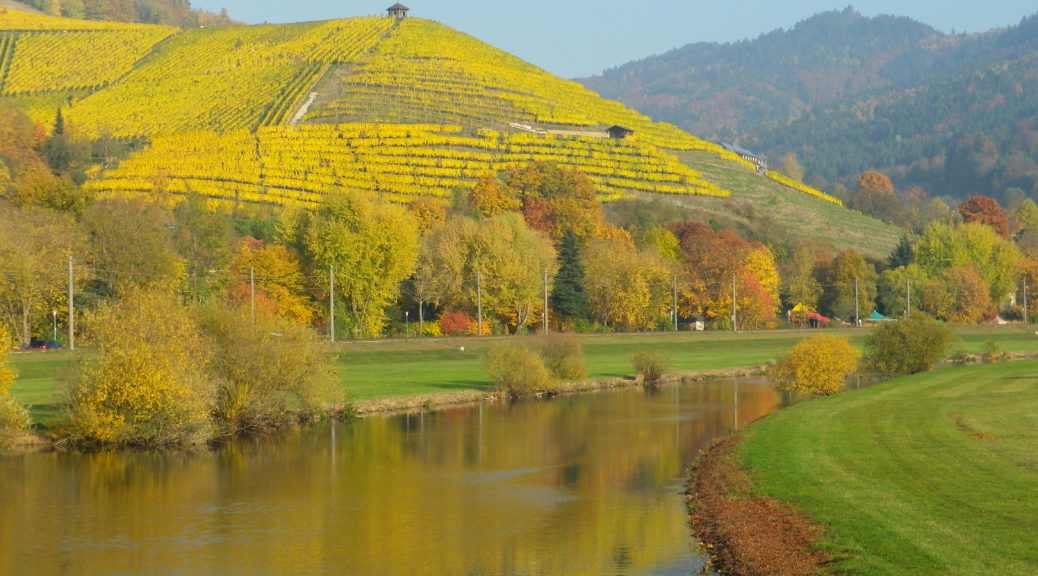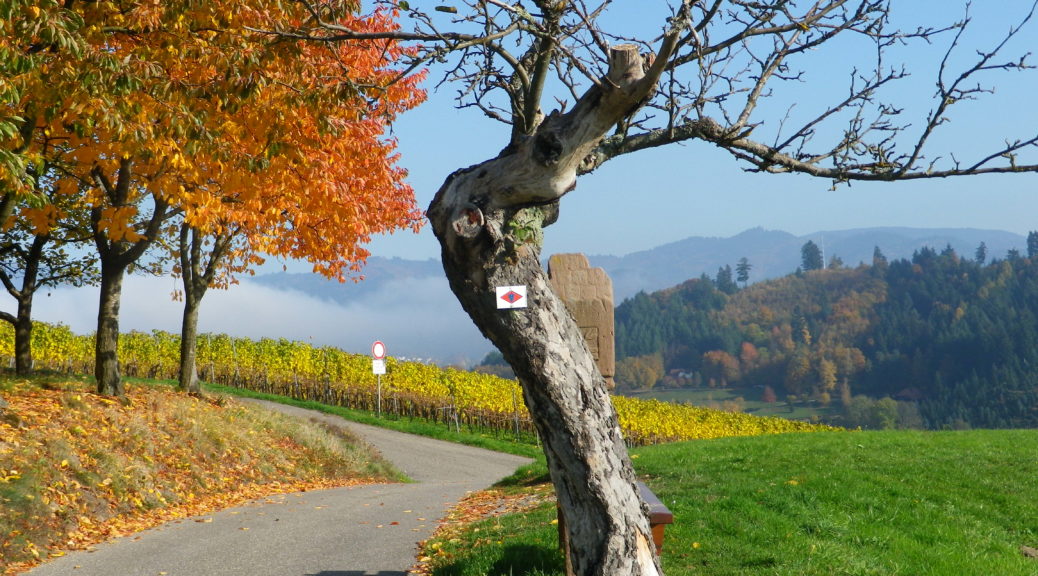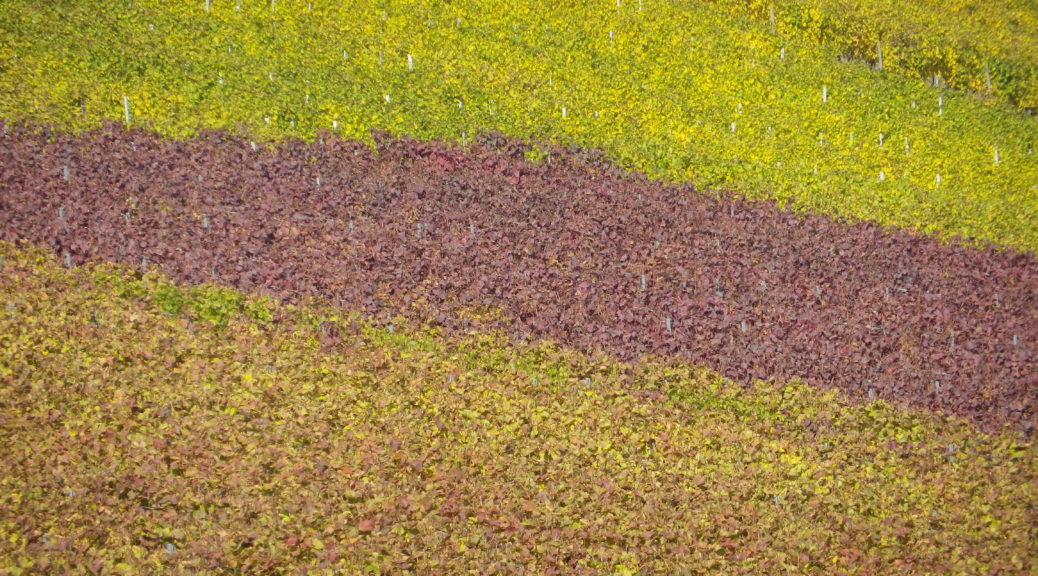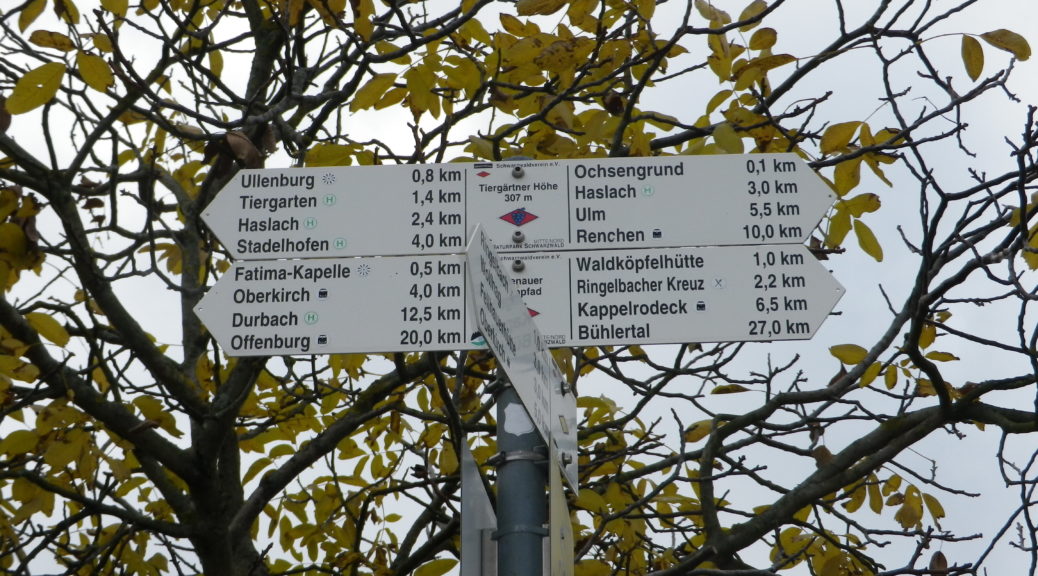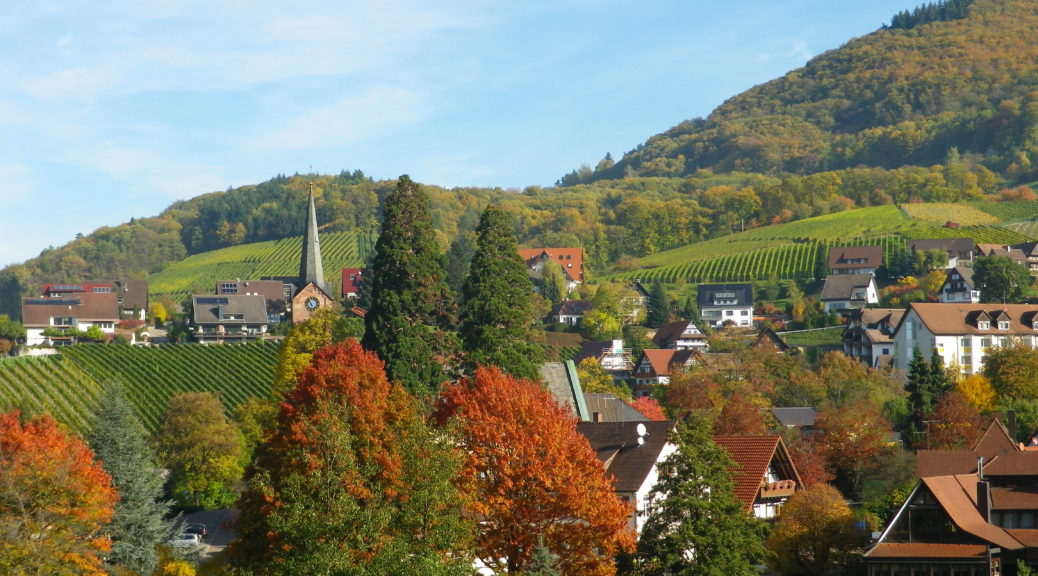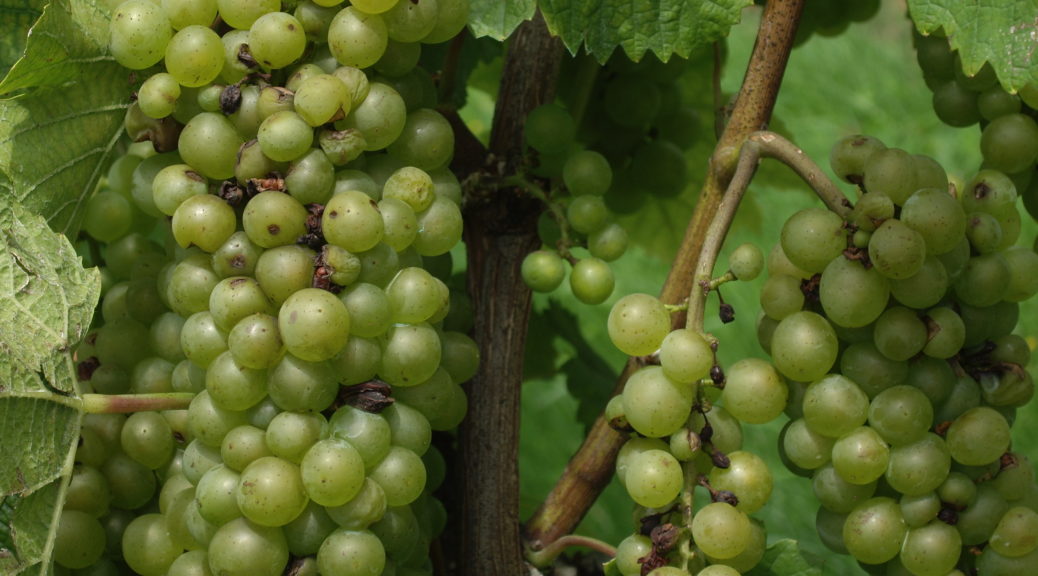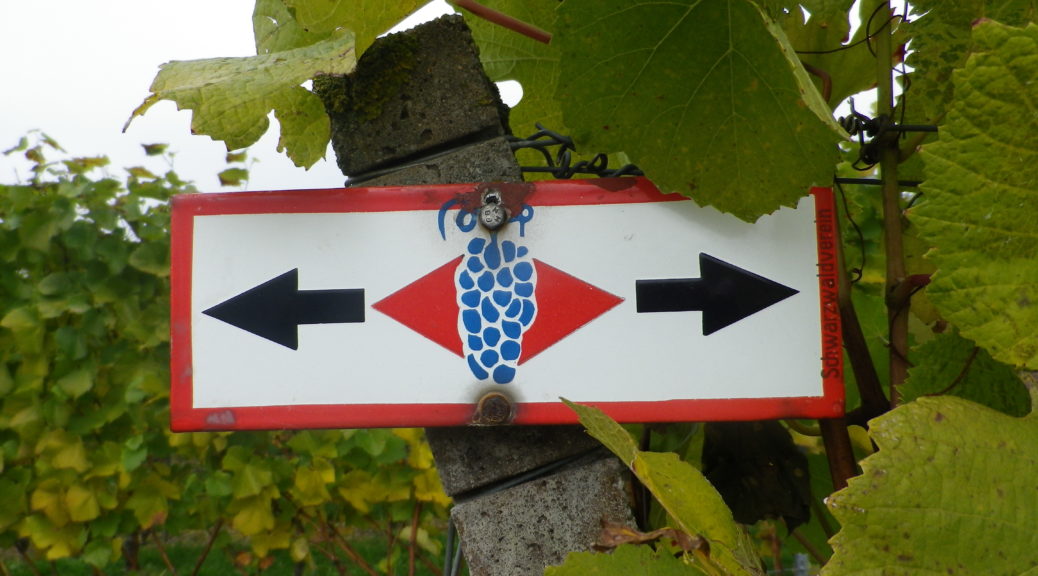Monthly Archives: November 2016
Enchanted Villages, Enchanting Land
Somewhere between Sasbachwalden and Kappelrodeck on the Ortenauer Weinpfad, a sense of enchantment steals over the landscape. The early morning fog, sometimes all-enshrouding, sometimes like wisps of steam from simmering cauldrons, rises from still pools, or solitary copses, magically parting of its own accord to reveal a landscape seemingly suspended in a long-ago time. Such is this region of the Black Forest.
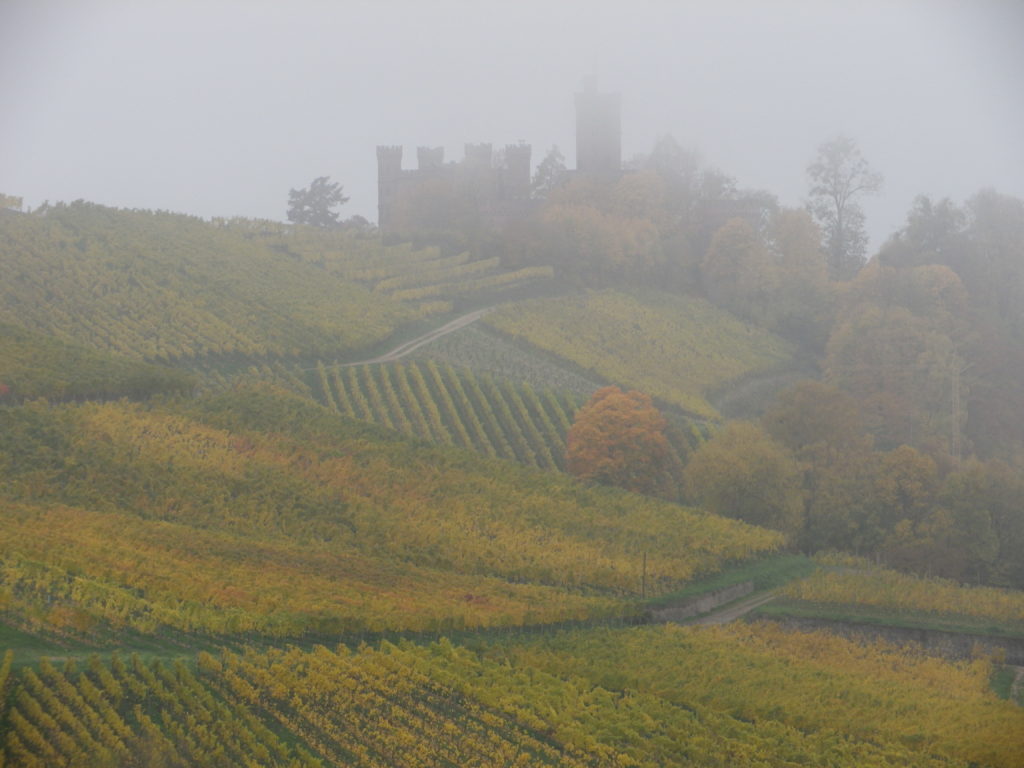
Wine Notes: Baden’s Ortenau District II
What I Learned South of Baden-Baden, the grape vines come to dominate the landscape. Their effect on local culture and history has been equally as dominant. Viticulture dates to 1070 in Steinbach, and a couple of centuries later around Varnhalt, with the founding of two monasteries, one Cistercian, the other Franciscan, in what is now Baden-Baden. The church connections remained close even until the 19th Century. In the northern part of the Ortenau (around Neuweier, Steinbach, Umweg and Varnhalt), vintners often use the famous Bocksbeutel, the iconic, flask-like bottle of Franconia. It appeared here as a result of a locally-born priest becoming the Bishop of Wuerzburg. Once there, he sent the Franconian bottles to the Ortenau, where they have been in use since the 1820s. Over time, many parcels have become known for consistently good growths. In the Ortenau, the most esteemed vineyard sites are the Goldenes Loch, Mauerberg, the Schlossberg(s), the Altenberg and the Gansberg, mostly of red sandstone and shale soils. The Schartenberg has weathered granite soils. The Pfarrberg in Waldulm, part of the Schloss Rodeck of Kappelrodeck territory, is likewise esteemed for its grapes, albeit with mostly local fame. Many parcels have well-known names, associated with gifts or donations dating back hundreds of years. Often names typically reflect church donations, such as the Kirchherrenberg, the “church men’s hill”. More unusually, the hamlet of Umweg has the oldest named plot in the district, dating to 1474. A local noble gave some rows of vines to his cook, Hanns Stichdenbuben, and Stich den Buben is the name it still bears today. Some parcel names derive from old Alemannic or more modern dialect, and refer to alleged activities or legends with roots in pagan beliefs surviving through the centuries. The winery and the parcel “Alde Gott” in Sasbachwalden, refers to the prayer of thanksgiving to the “old god,” who granted a young man his heart’s desire. In Kappelrodeck, the Hex (witch) vom Dasenstein winery’s gets its name from the legend of a brokenhearted young woman. Rejected by both the young man she loved and her own family, she found refuge in a cave on the nearby hillside (Dasenstein), eventually becoming known as a witch, in part for her bewitching wine. Thus, the vintners with their vineyards and wineries proudly continue to stake out their traditions and connections to the land. What I Tasted 2015 Riesling, Schuetzenberg, VDP Erste Lage, Qualitaetswein, Trocken; Weingut Freiherr von u. zu Franckenstein (Offenburg): A dry white wine with light gold color; nose of green apple, with hints of turpentine; honey, spice and sweet apple flavors; medium acidity with a long finish. 2014 Grauer Burgunder, Waldulmer Pfarrberg, Trocken, Kabinett, Winzergenossenschaft Waldulm (Waldulm): A dry white wine with light gold color; a sharp, fruity and mineral nose, with fruity, spicy and mineral flavors; medium acidity and finish. 2014 Spaetburgunder, Blanc de Noir, Waldulmer Pfarrberg, Trocken, Kabinett, Winzergenossenschaft Waldulm (Waldulm): A dry red wine with very pale gold color; slight fruit and vanilla nose, with red berry fruit (including raspberry), vanilla and oak flavors; no tannins and very smooth, medium-long finish. 2014 Cuvee Pfarrberg, Waldulmer Pfarrberg, Trocken, Kabinett, Winzergenossenschaft Waldulm (Waldulm): A dry white wine blend (Scheurebe, Mueller-Thurgau, Riesling, and Weisser Burgunder), with a pale gold color; fruity nose, and white stone fruit flavor; very mild acidity. 2013 Gewuerztraminer, Kabinett, Alde Gott Winzer (Sasbachwalden): A semi-dry white wine with medium gold color; spicy, lychee fruit nose, with honey, lychee, ripe peach, mango and savory spice flavors; mild acidity, with a long, slightly tangy finish. 2012 Grauburgunder, Trocken, Kabinett, Hex vom Dasenstein (Kappelrodeck): A dry white wine, with a fruity nose, and with fruity and slightly floral flavors; medium mouthfeel. 2012 Klingelberger Riesling, Trocken, Spaetlese, Oberkircher Winzer (Oberkirch): A dry white wine with a fruity nose, and peach, grape, and sweet citrus flavors, with slight minerality; a medium mouthfeel with mild acidity and a smooth finish. 2012 Grauburgunder Sekt, Trocken, Von Loewenberg, Weinmanufaktur Gengenbach (Gengenbach): A dry sparkling white wine with fine bubbles; a slight white stone fruits nose and flavors; a light and refreshing finish. 2011 Spaetburgunder, Trocken, Spaetlese, Praedikatswein, Julius Renner (Oberkirch): A dry red wine with light-medium red color; a neutral nose, with cherry flavors; light to medium body, with medium-low tannins.
Ortenauer Weinpfad II: Trail in a Nutshell
Trail Name: Ortenauer Weinpfad (OWP)
Trail Type: Long distance; almost exclusively paved or hard-packed earth, well maintained, very well-marked.
Length: Total: 101 kilometers/ 62.75 miles
Convenient to: Baden-Baden (north) and Offenburg (south), Germany
Marking: Blue grapes on a red diamond on a white background
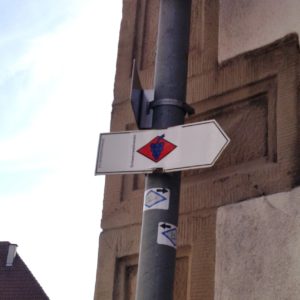
Christmas in October!
Imagine a Christmas tree lot on a crisp day in December. Then recall the wonderful smell of pine and pitch, with needles crunching underfoot, releasing even more fragrance as you walk along, searching for that perfect Christmas tree, and you have a fair idea of the first leg of the Ortenauer Weinpfad in the magical Black Forest.
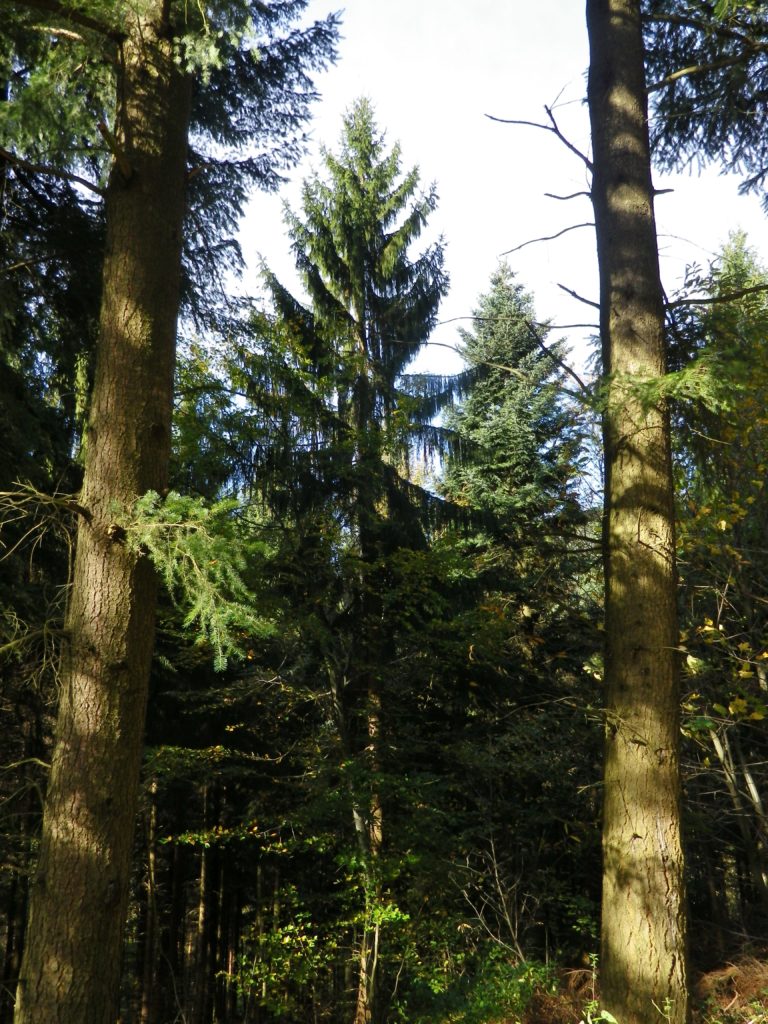
Wine Notes: Baden’s Ortenau District I
What I Learned
Within the Baden wine region, there are several distinct wine areas. One of these is the Ortenau, from the famous spa town of Baden-Baden south to Gengenbach. Between these two towns, on an undulating landscape, lies bucolic countryside, punctuated by picturesque wine villages. The rolling hills which protect the grape-bearing slopes from too much wind, and the relatively mild and sunny climate, make this one of the best areas for growing grapes in Germany.
Ortenauer Weinpfad I: Trail in a Nutshell
Trail Name: Ortenauer Weinpfad
Trail Type: Long distance; almost exclusively paved or hard-packed earth, well maintained, mostly very well-marked, (but bring a map anyway).
Length:
Total: 101 kilometers/ 62.75 miles
Northern half: approximately 51 kilometers/31.7 miles
Convenient to: Baden-Baden and Offenburg, Germany
Marking: Blue grapes on a red diamond on a white background

